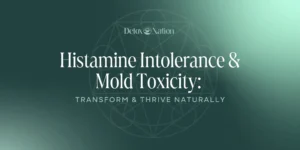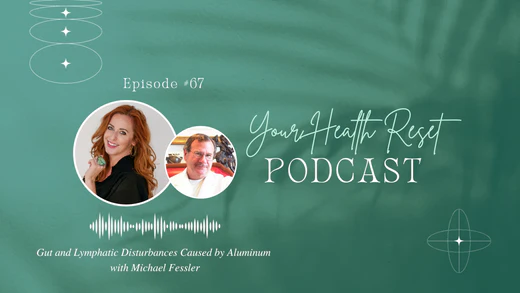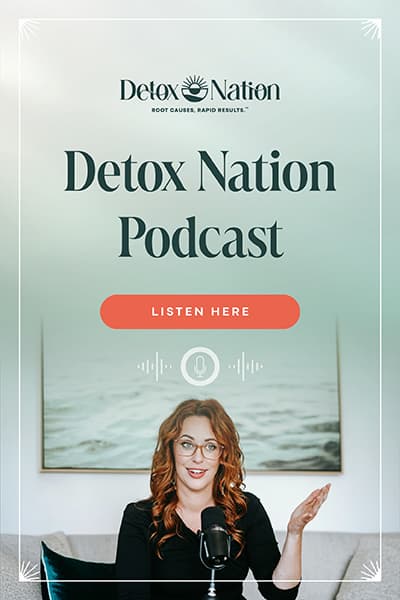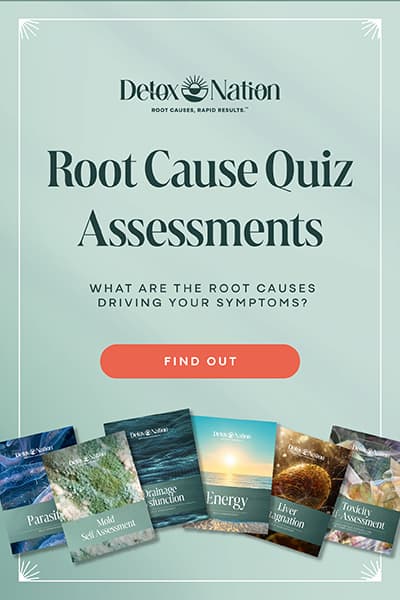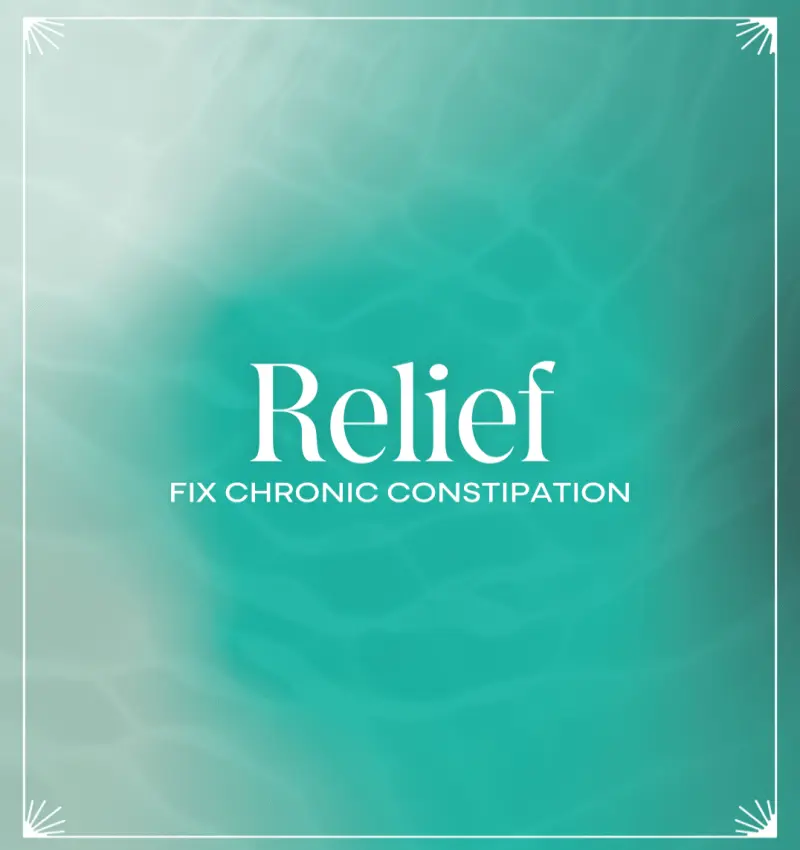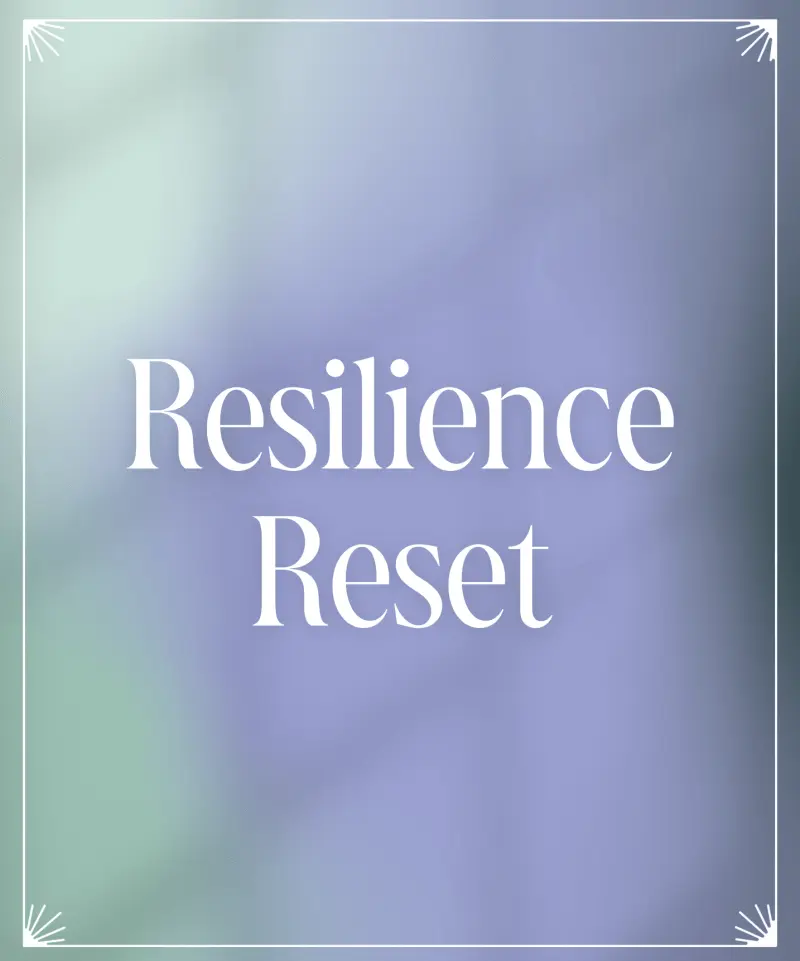Struggling with weight gain, insomnia, and exhaustion? These are common symptoms of menopause, but environmental toxins can make the effects of menopause even worse. Discover what’s really behind your menopause symptoms and how to fix them.
So, menopause finally rolled up to your doorstep.
Not with a polite knock, but with a full-body tackle that took out your energy, metabolism, and ability to remember why you walked into the kitchen.
But here’s what no one tells you: a lot of what we chalk up to menopause isn’t actually menopause at all.
Your body isn’t just dealing with hormonal shifts—it’s also navigating decades of toxic exposure, from plastics and pesticides to heavy metals and hormone-mimicking chemicals that have been slowly eroding your health for years.
The result?
A menopause experience that feels like it’s on steroids.
More intense hot flashes, next-level exhaustion, and mysterious symptoms that just don’t add up.
So, how do you separate what’s menopause from what’s just a toxic mess?
And more importantly—how do you fix it?
Don’t worry, I’ve got you.
(And no, the answer isn’t just “deal with it.”)
Key Takeaways:
- Hormonal decline is an inevitable part of aging.
- Much of what we attribute to menopause may be due to toxic burden.
- Suffering is optional!
What Is Menopause (Really)?
Menopause isn’t a singular moment in time—it’s a long transition (11).
Perimenopause can start in your 30s or 40s, where hormones begin their slow, chaotic rollercoaster (29).
Actual menopause is defined as 12 consecutive months without a period, and post-menopause is everything after that (11, 29). The average age of menopause is 51 years old.
Common Symptoms of Menopause:
- Vasomotor Symptoms of Menopause (VMS) such as Hot Flashes and Night Sweats (2, 3, 9, 13, 23, 32, 36) – One minute, you’re cool as a cucumber. The next, you’re peeling off layers, standing in front of the freezer, and wondering if you’re combusting from the inside out. Thanks to plummeting estrogen, your internal thermostat is officially broken.
- Genitourinary Symptoms of Menopause (GSM) like Vaginal Dryness, Painful Sex, UTIs & More (5, 6, 24, 30, 33, 34, 37) – As estrogen drops, so does moisture everywhere—including where you really don’t want it to. Your tissues are thinning, and your natural defenses are weaker. It’s like your body suddenly forgot how to keep things comfortable down there, and you’re stuck dealing with the aftermath.
- Neurological and Cognitive Changes such as Brain Fog & Memory Lapses (3, 9, 17, 18, 19, 34) – Can’t find the word for… that thing? Estrogen plays a huge role in cognitive function, so when it drops, so does your ability to focus, recall names, and complete a sentence without second-guessing yourself.

- Emotional Changes like Mood Swings, Anxiety & Irritability (8, 9, 13, 17, 18, 19, 23, 29, 30, 32, 34) – Everything is fine, right up until the moment you’re suddenly plotting revenge on someone looked in your direction. Estrogen and progesterone regulate serotonin and dopamine, so when they dip, your emotions go haywire.
- Weight Gain, Particularly Around the Middle (9, 10, 17, 18, 24, 29, 32) – Even if you haven’t changed your diet, your midsection seems to have acquired a mind of its own. With estrogen no longer telling your body where to store fat, your metabolism slows, and belly fat takes up permanent residency.
- Sleep Disturbances & Insomnia (3, 9, 13, 17, 18, 23, 24, 25, 32, 34, 36) – You’re exhausted all day, but the second you crawl into bed, your brain turns into an overcaffeinated gremlin. Low progesterone makes it harder to relax, while night sweats keep you up for an encore.
- Fatigue (Even After “Resting”) (3, 9, 13, 17, 18, 23, 24, 25, 32, 34, 36) – Your hormones regulate energy production, so when they’re out of whack, you feel like you’re running on fumes—without ever hitting the refill button.
Sounds like fun, right? Now let’s complicate things… because these are also common signs of toxin exposure.
What Is Toxin Exposure? (Spoiler: You’re Definitely Exposed)
You don’t have to work in a chemical factory to be dealing with a toxic load. Your body is bombarded daily by toxins from air, food, water, and even personal care products.
Where Toxins Come From:
- Air pollution – Toxins such as benzene, formaldehyde, and particulate matter are released from vehicle emissions, industrial processes, and household items like scented candles and air fresheners. Indoor air quality can be even worse due to off gassing from furniture, carpets, and paints.
- Heavy metals – Lead (found in old paint and contaminated water), mercury (from seafood and dental fillings), arsenic (found in rice and groundwater), and cadmium (from cigarette smoke and industrial pollution) all accumulate in the body and disrupt cellular function (38, 39, 40, 41).
- Pesticides and herbicides – Glyphosate (commonly found in non-organic produce), organophosphates, and neonicotinoids are sprayed on crops and can remain on food even after washing. These chemicals act as endocrine disruptors, interfering with hormone balance (42, 43, 44, 45).
Your liver is working overtime!
If you’ve been feeling sluggish, bloated, or out of sync, it’s time to reclaim your vitality from the inside out. Support your liver and feel the difference—starting today.
Join Rapid Liver Reset- Mold and mycotoxins – Toxic mold exposure from water-damaged buildings or food releases mycotoxins such as ochratoxin A, aflatoxins, and trichothecenes. These toxins impair liver function, suppress the immune system, and contribute to neurological symptoms (46, 47, 48, 49).
- Plastics and endocrine disruptors – BPA, phthalates, and PFAS (forever chemicals) are found in plastic containers, food packaging, receipts, and non-stick cookware. These chemicals mimic estrogen in the body, throwing off hormonal balance (45, 50, 51, 52).
- Personal care products – Many shampoos, lotions, and cosmetics contain parabens, formaldehyde-releasing preservatives, and synthetic fragrances. These toxins absorb through the skin and disrupt the endocrine system (45).
- Medical implants, medications, and household cleaners – Some medical devices contain toxic metals, while common medications (such as NSAIDs and statins) can burden the liver. Household cleaners often contain ammonia, chlorine, and VOCs that are inhaled and absorbed through the skin.
- Electromagnetic Fields (EMFs) – Non-ionizing radiation from Wi-Fi, cell phones, Bluetooth devices, and smart meters has been linked to oxidative stress, sleep disturbances, and mitochondrial dysfunction (59, 60, 61). Constant exposure to EMFs can amplify the effects of other environmental toxins.
If your detox systems are overwhelmed, your body doesn’t eliminate toxins efficiently.
Instead, they linger, disrupt your hormones, and mimic the effects of menopause—or make them worse.
Let’s take a closer look at one category of toxins that can be especially problematic in relation to hormones: Endocrine Disruptors.
Spotlight: Endocrine Disrupting Chemicals
Alright, let’s talk about endocrine-disrupting chemicals (EDCs)—because they’re everywhere.
These sneaky little impostors mimic or interfere with your hormones and your endocrine system, which controls everything from metabolism to mood, energy, sleep, and even how well your body detoxifies.

But thanks to modern living, we’re marinating in chemicals that confuse the system, making it think it’s getting the right signals—when in reality, it’s like getting GPS directions from someone who’s never been to your city.
Here are ten of the most common endocrine disruptors:
- BPA: This plastic additive used to be in every water bottle and receipt (yes, receipts), and it loves to pretend it’s estrogen. The problem? When your body gets fake estrogen, it throws off the real stuff, leading to mood swings, weight gain, or even fertility issues (45, 50, 51, 52).
- Phthalates: The “softeners” in plastics and personal care products. These bad boys don’t just disrupt hormones; they’re also linked to lower testosterone in men and early puberty in girls (45).
- Glyphosate: Found in herbicides and pesticides (especially Roundup), non-organic produce, and used as a drying agent on organic and conventional grains. One order of organic oatmeal with a side of glyphosate, coming right up! It’s been shown to mimic estrogen, disrupt the gut microbiome (which affects hormone balance), and is linked to birth defects (42, 43).
- Atrazine: Another herbicide with an astounding ability to contaminate groundwater, surface water, and even drinking water! It has been shown to alter estrogen levels, feminize male animals in studies (seriously, Google “atrazine and frogs”!); and is associated with reproductive cancers (56, 57, 58).
- Perfluorinated Chemicals (PFCs, PFAS): Found in non-stick cookware, waterproof clothing, and fast-food wrappers. They interfere with thyroid hormones and have been linked to low birth weight and immune suppression (50, 51, 52).
- Dioxins: Found in industrial byproducts, meat, and dairy (due to bioaccumulation in fat)
They disrupt estrogen/testosterone balance, affect sperm quality, and weaken immune function (53). - Parabens: Found in cosmetics, lotions, shampoos, and processed foods. They mimic estrogen and are linked to breast cancer and reproductive issues (45).
- PCBs (Polychlorinated Biphenyls): Found in old electrical equipment, contaminated fish, and industrial pollution. These interfere with thyroid function and are linked to neurological and developmental issues (54, 55).
- Heavy Metals (Lead, Mercury, Cadmium, Arsenic): Found in water pipes (lead), seafood (mercury), cigarette smoke (cadmium), contaminated water (arsenic). Heavy metals block essential minerals, interfere with hormone receptors, and damage thyroid function (40, 41).
- Flame Retardants (PBDEs, Brominated Compounds): Found in furniture, electronics, mattresses, and even household dust! They mimic thyroid hormones and are linked to cognitive delays, fertility issues, and developmental disorders.
What makes EDCs even trickier is that they don’t just hit you all at once; they build up over time.
Maybe your energy tanks, your skin freaks out, or your digestion turns into a full-time job, and you chalk it up to “getting older” or “being busy.”
The worst part?
Many of these chemicals were deemed “safe” by outdated testing methods that didn’t account for long-term, low-dose exposure—so regulators are basically playing catch-up while we’re out here being the guinea pigs.
Ohhh, this is the perfect storm that no one warns women about.
Menopause is already a hormonal rollercoaster, but when you add decades of exposure to endocrine-disrupting chemicals (EDCs)?
That’s like throwing a wrench into an already malfunctioning control panel.
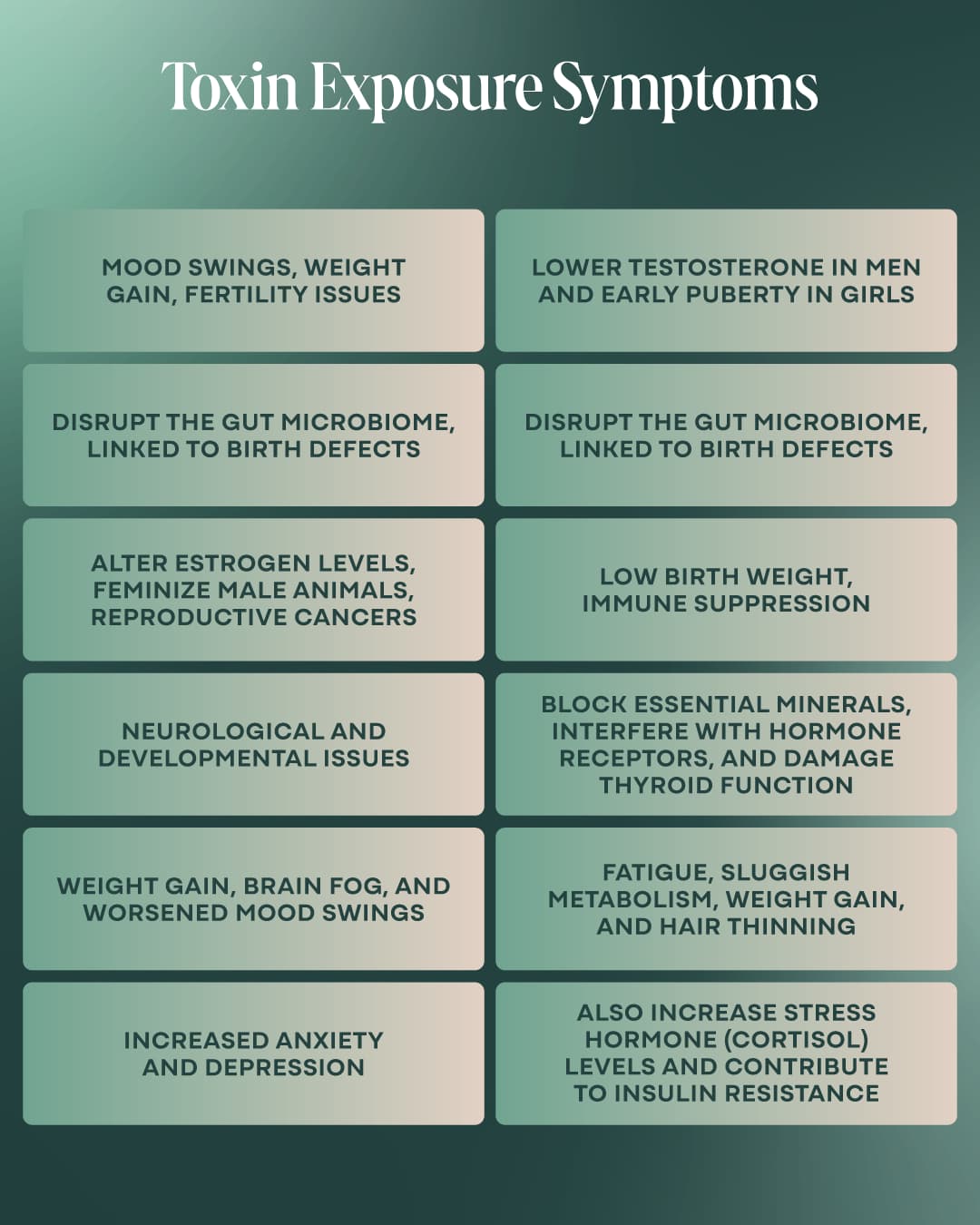
How Toxins Mimic or Worsen Menopausal Symptoms
During menopause, estrogen and progesterone naturally decline, but toxins—many of which mimic estrogen (like BPA and parabens) or block hormone function (like dioxins and flame retardants)—can make the transition feel even more chaotic (45, 50, 51, 52).
Instead of a gradual hormonal shift, the body is left confused and overstimulated in some areas while being totally depleted in others.
For example:
- BPA and phthalates can act like weak estrogens, leading to symptoms like weight gain, brain fog, and worsened mood swings—even though your body’s own estrogen is dropping (45, 50, 51, 52).
- Heavy metals and flame retardants interfere with thyroid function, making fatigue, sluggish metabolism, weight gain, and hair thinning much worse (38, 39, 40, 41).
- Pesticides like atrazine are linked to increased anxiety and depression, which are already common during menopause due to declining progesterone levels (42, 43, 56, 57, 58).
- PFAS (the “forever chemicals”) disrupt liver detox pathways, which means excess estrogens and stress hormones linger in the body longer, amplifying hot flashes, irritability, and stubborn belly fat (50, 51, 52).
Cortisol Chaos & Blood Sugar Wreckage
As if hormone disruption wasn’t enough, many toxins also increase stress hormone (cortisol) levels and contribute to insulin resistance—two things that are already shifting during menopause. This leads to:
- More belly fat (especially around the waistline)
- Higher blood sugar levels and insulin resistance (making weight loss feel impossible)
- Poorer sleep quality and night sweats (since cortisol and blood sugar fluctuations wake you up at 3 AM) cause daytime fatigue, brain fog, and other cognitive issues.
Long-Term Risks: Beyond the Symptoms
The real danger of combining toxic exposure with menopause isn’t just the day-to-day misery—it’s the long-term health risks:
- Increased risk of breast cancer (since many toxins disrupt estrogen pathways)
- Higher rates of osteoporosis (due to thyroid disruption and calcium depletion from heavy metals)
- Worsened cardiovascular disease risk (since toxins impact cholesterol and inflammation)
- Cognitive decline and dementia risk (because toxins like PCBs and heavy metals impair brain function)
Symptom Sorting: Effects of Menopause vs. Toxin Exposure
When hormonal chaos meets toxic burden, how do you know which symptoms are due to menopause and which symptoms are due to toxins?
Let’s look at several of the overlapping symptoms and how you can tell them apart.
Brain Fog & Memory Issues
- Likely Menopause if: It comes in waves, gets worse around your cycle (if you’re perimenopausal), and improves when you sleep well or take estrogen-supporting supplements (like phytoestrogens).
- Likely Toxic Exposure if: It feels constant, worsening over time, and is accompanied by other neurological symptoms like tingling, dizziness, or headaches (which can indicate heavy metals or mold exposure).
Fatigue & Low Energy
- Likely Menopause if: You feel sluggish but can rally with rest, hydration, and blood sugar management. It’s also worse after poor sleep.
- Likely Toxic Exposure if: You feel bone-deep exhaustion that doesn’t improve with rest, and stimulants (like caffeine) make you feel jittery but not refreshed. This points to toxic burden on the liver and mitochondria.
Weight Gain (Especially Belly Fat)
- Likely Menopause if: It’s mostly in the midsection, you’re craving more carbs than usual, and weight comes on slowly but steadily.
- Likely Toxic Exposure if: The weight gain is rapid, unexplainable, and resistant to diet and exercise—especially if you also have bloating and puffiness (which could indicate inflammation from pesticides, plastics, or heavy metals).
Mood Swings, Anxiety & Depression
- Likely Menopause if: You feel irritable and anxious before/during hormone fluctuations but find relief with progesterone-supporting foods or supplements.
- Likely Toxic Exposure if: Your moods feel random, severe, or extreme, especially with unexplained panic attacks, emotional numbness, or suicidal thoughts (which can be linked to heavy metals, pesticides, or mold toxicity).
Sleep Problems (Insomnia, Waking Up at 3 AM)
- Likely Menopause if: You have trouble falling asleep and wake up sweating or feeling restless.
- Likely Toxic Exposure if: You wake up at the same time every night (especially between 1-3 AM—a sign your liver is struggling), feel wired but tired, or have night sweats that persist even in a cool room.
Joint Pain & Muscle Aches
- Likely Menopause if: The stiffness is worse in the morning, improves with movement, and is relieved by anti-inflammatory foods or supplements.
- Likely Toxic Exposure if: Pain is random, widespread, or migratory, feels like deep muscle fatigue, or is accompanied by nerve pain (tingling, burning, or electric zaps)—a sign of heavy metals or glyphosate exposure.
Hot Flashes & Night Sweats
- Likely Menopause if: They happen predictably after eating spicy food, drinking alcohol, or feeling stressed, and are relieved with cooling supplements (like black cohosh).
- Likely Toxic Exposure if: They feel random, excessive, or extreme—especially if they come with dizziness, nausea, or sudden flushing after eating (which can indicate pesticide or chemical exposure).
Digestive Issues (Bloating, Constipation, Food Sensitivities)
- Likely Menopause if: Digestion feels slower but manageable, and bloating gets worse after carbs or dairy (since estrogen affects gut motility).
- Likely Toxic Exposure if: You have chronic bloating, nausea, or unexplained food reactions, especially to healthy foods (which can indicate glyphosate, mold, or heavy metals disrupting gut bacteria).
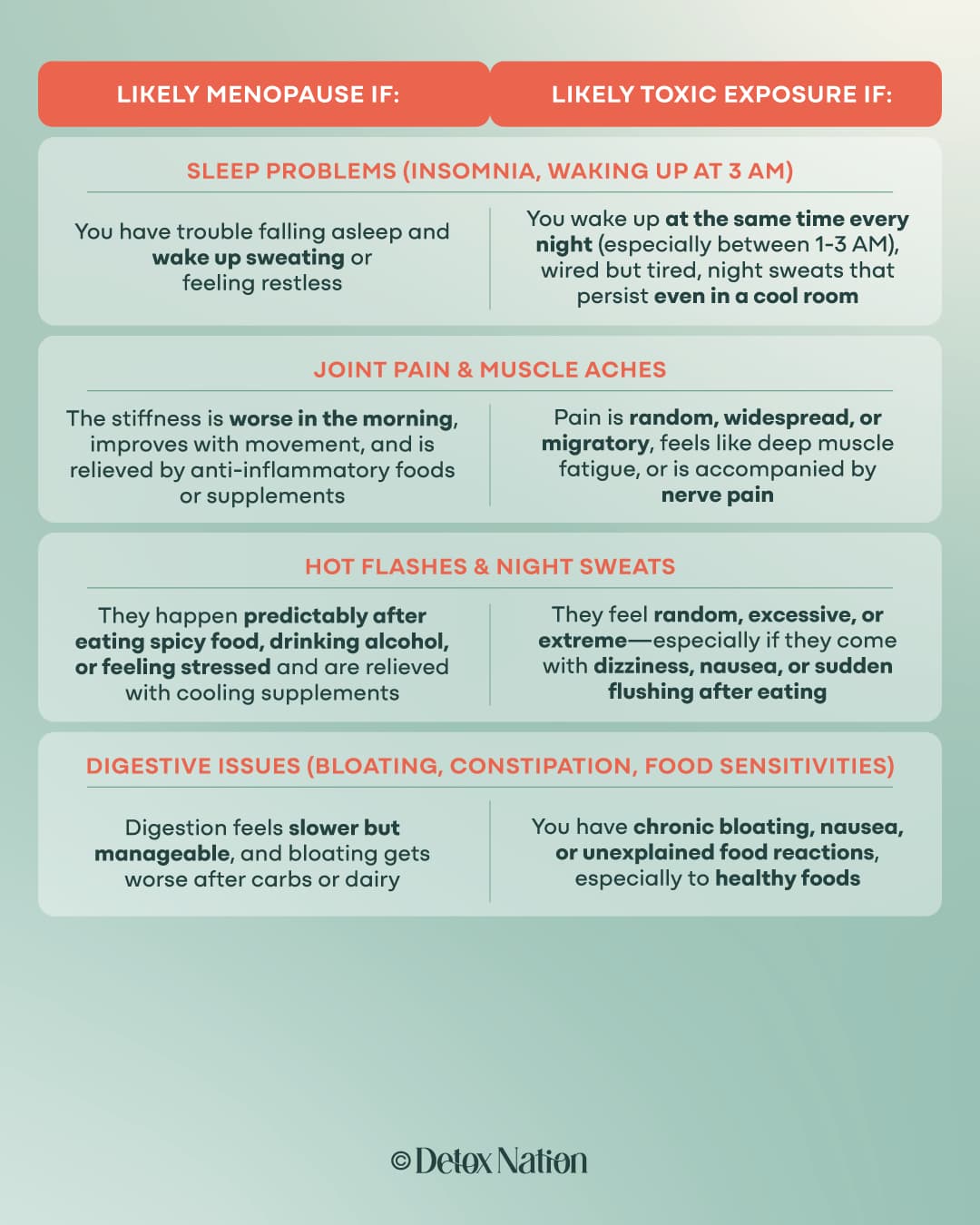
Menopausal and Toxic: Now What?
Thankfully, you don’t have to be miserable, and toxins don’t have to run the show! Here are some actionable tips to get you started:
Upgrade What You’re Eating (Because Your Liver Is Your Best Detox Friend)
- Go organic when possible – Especially for the Dirty Dozen (strawberries, spinach, kale, etc.), because pesticides like glyphosate wreck your hormones.
- Ditch ultra-processed foods – Many contain endocrine-disrupting additives like BPA from cans and phthalates from packaging.
- Prioritize clean protein and healthy fats – Grass-fed meats, wild-caught fish, and avocado support hormone production and stabilize blood sugar.
Filter Out Hidden Toxins (Because Your Environment Matters More Than You Think)
- Ditch plastic for glass or stainless steel – BPA and phthalates in plastic mimic estrogen and make menopause way worse.
- Invest in good water – Heavy metals and pesticides in tap water disrupt your thyroid and liver. (Look for a high-quality water distiller.)
- Switch to non-toxic personal care & cleaning products – Conventional shampoos, lotions, and cleaners are full of parabens, formaldehyde, and synthetic fragrances that mess with your hormones.
Help Your Body Actually Eliminate Toxins
- Sweat it out – Infrared saunas, exercise, and Epsom salt baths help push toxins out through your skin.
- Move your lymphatic system – Dry brushing, rebounding (mini-trampoline), and hydration keep your detox pathways flowing.
- Support your liver – Milk thistle, dandelion root tea, and other gentle supports help your liver break down and remove toxins.
Ready to Reset?
Look, menopause is going to happen no matter what.
You can’t stop time (trust me, I’ve looked into it).
But the severity of your symptoms?
That’s something you can change.
If your body is drowning in toxins, menopause will hit you like a freight train.
If you start clearing out the toxic garbage that’s been piling up for years?
Your hormones can transition the way they were designed to.
Imagine having more energy, fewer mood swings, and a metabolism that cooperates—just by getting rid of the junk that’s making menopause 10 times harder than it needs to be.
It’s not about perfection (we live on planet Earth, not in a toxin-free bubble), but every small step you take makes a difference.
Your liver is working overtime—help it out with the Rapid Liver Reset program. It’s the simplest, most effective way to clear toxins, support your hormones, and reclaim your energy.
Now that you know the truth, you have two choices: Keep blaming menopause for everything or start supporting your body so it can do what it’s designed to do—heal. Your call.
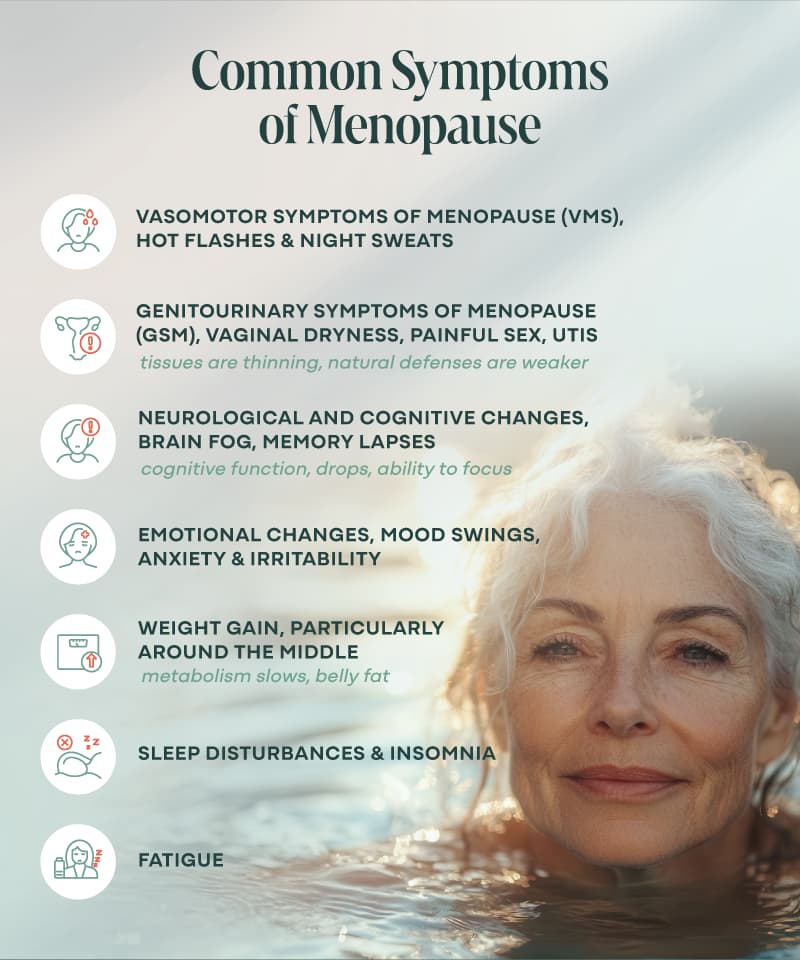
Your liver is working overtime!
If you’ve been feeling sluggish, bloated, or out of sync, it’s time to reclaim your vitality from the inside out. Support your liver and feel the difference—starting today.
Join Rapid Liver ResetFAQs
-
How do I know if my symptoms are from menopause or toxic exposure?
If your symptoms fluctuate with your cycle, they’re likely menopause related. If they feel random, extreme, or resistant to hormone-balancing strategies, toxins could be making things worse. -
Can I test for toxin exposure?
Yes! You can test for heavy metals, mycotoxins (mold), pesticides, and endocrine disruptors with advanced functional tests. Hair, urine, and blood tests can all provide clues, but it’s best to work with a toxin-literate practitioner so you don’t waste time or money on the wrong tests. -
What’s the first step to reducing toxin exposure?
Start by swapping plastic for glass, filtering your water, choosing organic produce when possible, and switching to non-toxic personal care products. Small changes add up fast!
-
Can detoxing really help with managing menopause symptoms and causes?
Absolutely. When your body isn’t overwhelmed by toxins, your hormones regulate more easily, hot flashes and brain fog improve, and your energy comes back. Your liver will thank you.
-
Is it too late to start detoxing if I’m already in menopause?
Nope! Your body is always healing(otherwise, you’d be dead). Supporting detox pathways can help balance hormones, boost energy, and improve metabolism-at any stage of life. -
What is menopause, and what symptoms can I expect?
Menopause is a natural process of hormonal decline where your period stops. Perimenopause is the time leading up to menopause. Physical and emotional symptoms of menopause include hot flashes, anxiety, depression, sleep disruption, fatigue, brain fog, urinary tract infections, pain during sex, vaginal dryness, and bone density changes. Menopause can also affect the musculoskeletal system, resulting in symptoms relating to joints, muscles, tendons, and ligaments. Each woman experiences menopause differently, and her symptoms may last for several years. Toxic exposures can cause the symptoms associated with menopause to be worse, but lifestyle changes can alleviate many common menopause symptoms.

